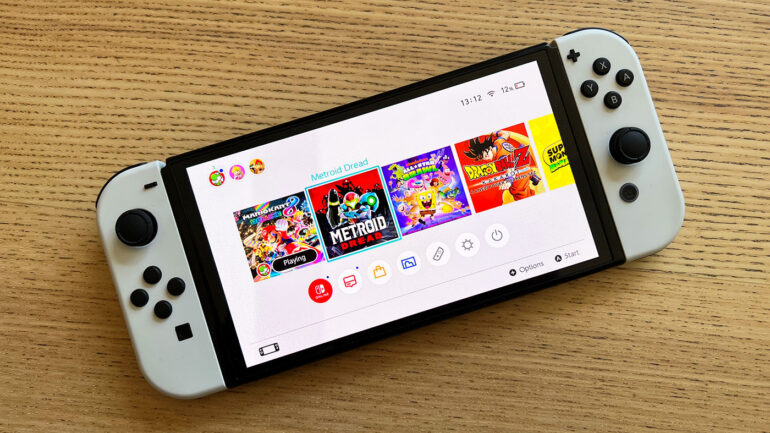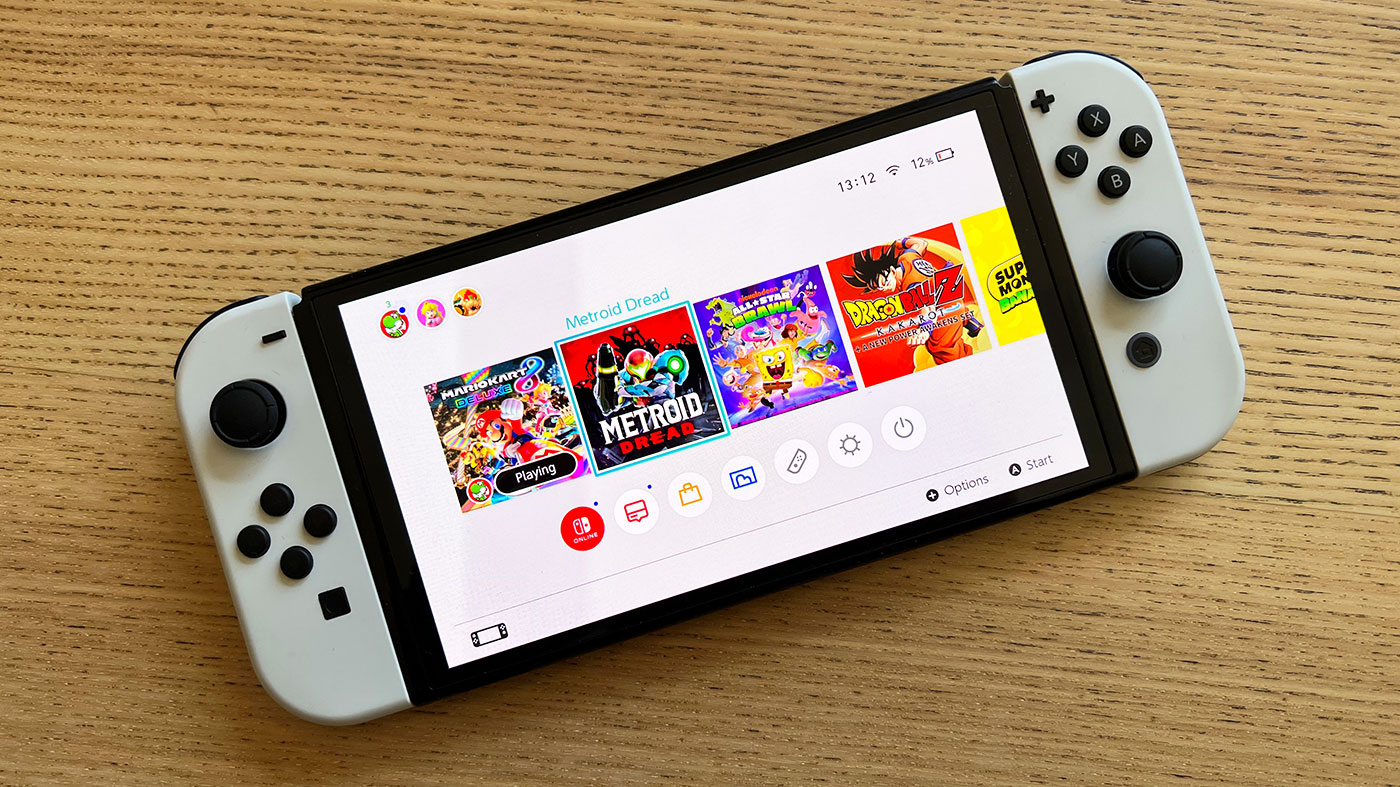When Nintendo announced the Nintendo Switch OLED earlier this year, I was as confused as most as I discovered that there weren’t any performance upgrades. I was still really optimistic, as I know that gaming on an OLED screen is second to none, and I’m somebody that spends majority of my time with my Switch in handheld mode.
Picking up the console for the first time, everything feels familiar. In the hands, the Switch OLED feels almost identical apart from the fact that the back feels a lot more matte, which provides a decent amount of grip. Size wise, despite the fact that there’s a much larger screen, the Switch remains almost identical, which I’m super thankful for, because I think if it were any larger, it would have been a much tougher sell on the portability side.
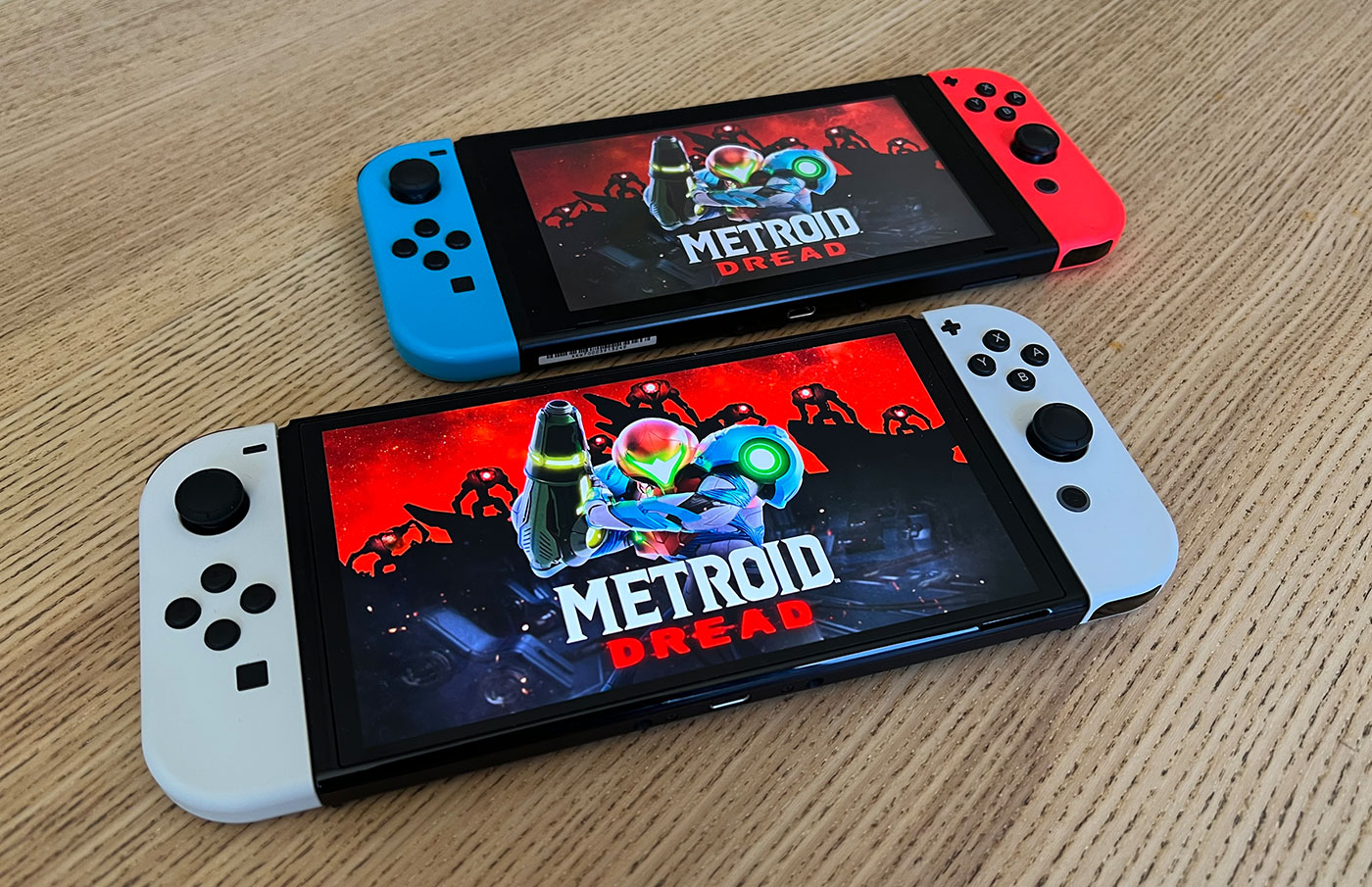
This is the real gamechanger. At first glance, or looking at images of the console, you don’t get a grasp of how much that bigger screen with a much smaller bezel, will make the Switch OLED in handheld mode a much better option than it was before. Not only is the screen bigger, without the Switch gaining any size physically, that OLED display is downright gorgeous.
Here’s The Nintendo Switch OLED And OG Nintendo Switch Compared In Photos
The PlayStation VITA is probably my favourite portable console of all time thanks to its beautiful OLED, and the now the Nintendo Switch OLED takes that crown. It’s extremely easy to palm the OLED screen off as not much of an improvement, but coupled with the increased size of the screen, it makes a massive difference. The blacks are now as deep as the eye can see, which was demonstrated perfectly whilst playing Metroid Dread, which is a game that makes a lot of use of black space throughout the level design (more on that in my Metroid Dread review here).
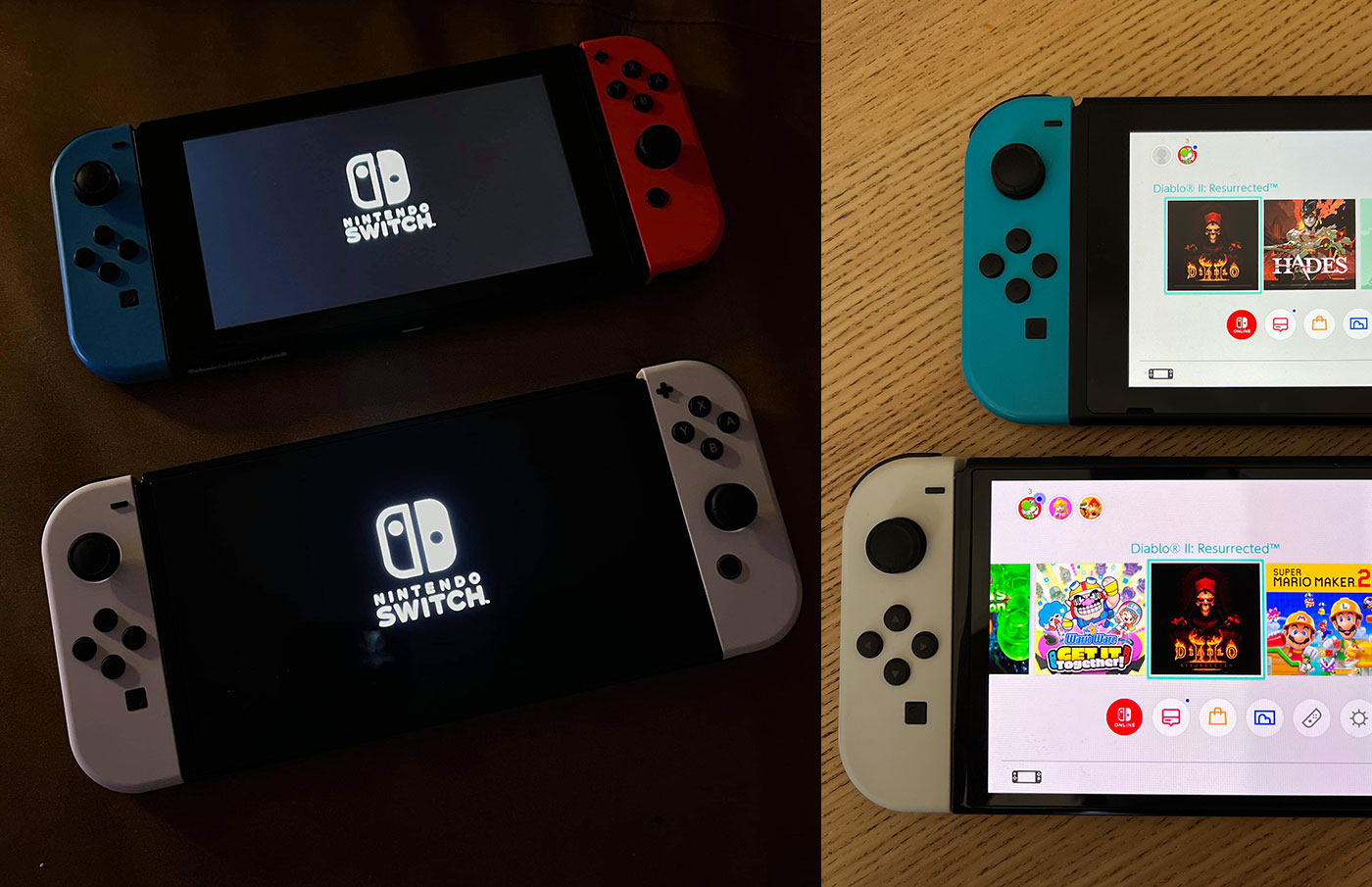
What’s much more impressive though is the screen’s vividness, which is mostly due to a new OLED exclusive ‘Console Screen Vividness’ setting that can be turned on or off. This is hugely beneficial for Nintendo games, that really rely on vibrant colours and flatter, less realistic graphics. Everything pops more, and going back to games such as Mario Kart 8, Super Mario Odyssey and Breath of the Wild made them feel new again (check out a bunch of comparison shots here).
There was a lot of the concern for the Switch OLED losing even more pixel density due to the larger screen but everything looks crisper somehow. My guess would be that Nintendo has turned up the sharpness or contrast, which makes everything look better. The best part of all of this is that there’s no messing with TV settings, what you’re getting is the best possible version of these Switch games.
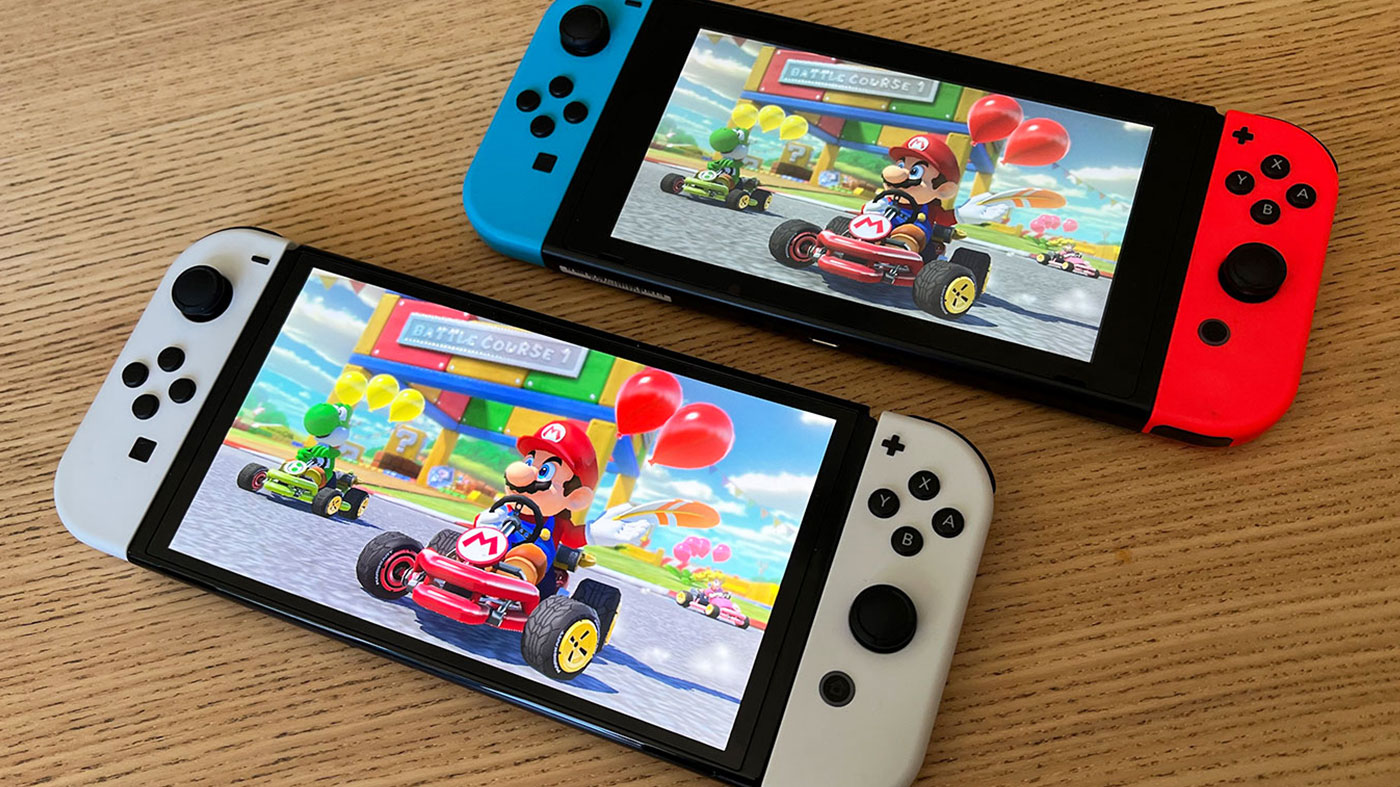
It’s worth mentioning that the screen is fully glossy now (which is normal for an OLED display). This means that you might get more glare on your screen than with the older Switch, but I found that the increased brightness more than made up for this.
Another major improvement is the kickstand, and again, I believe that this improvement will have more people actively whipping their Joy-Con off and popping the Switch down on a table. Rather than the pokey little stand that was on the old Switch, the new stand goes the full length of the Switch and seems to be made of a much more durable material.
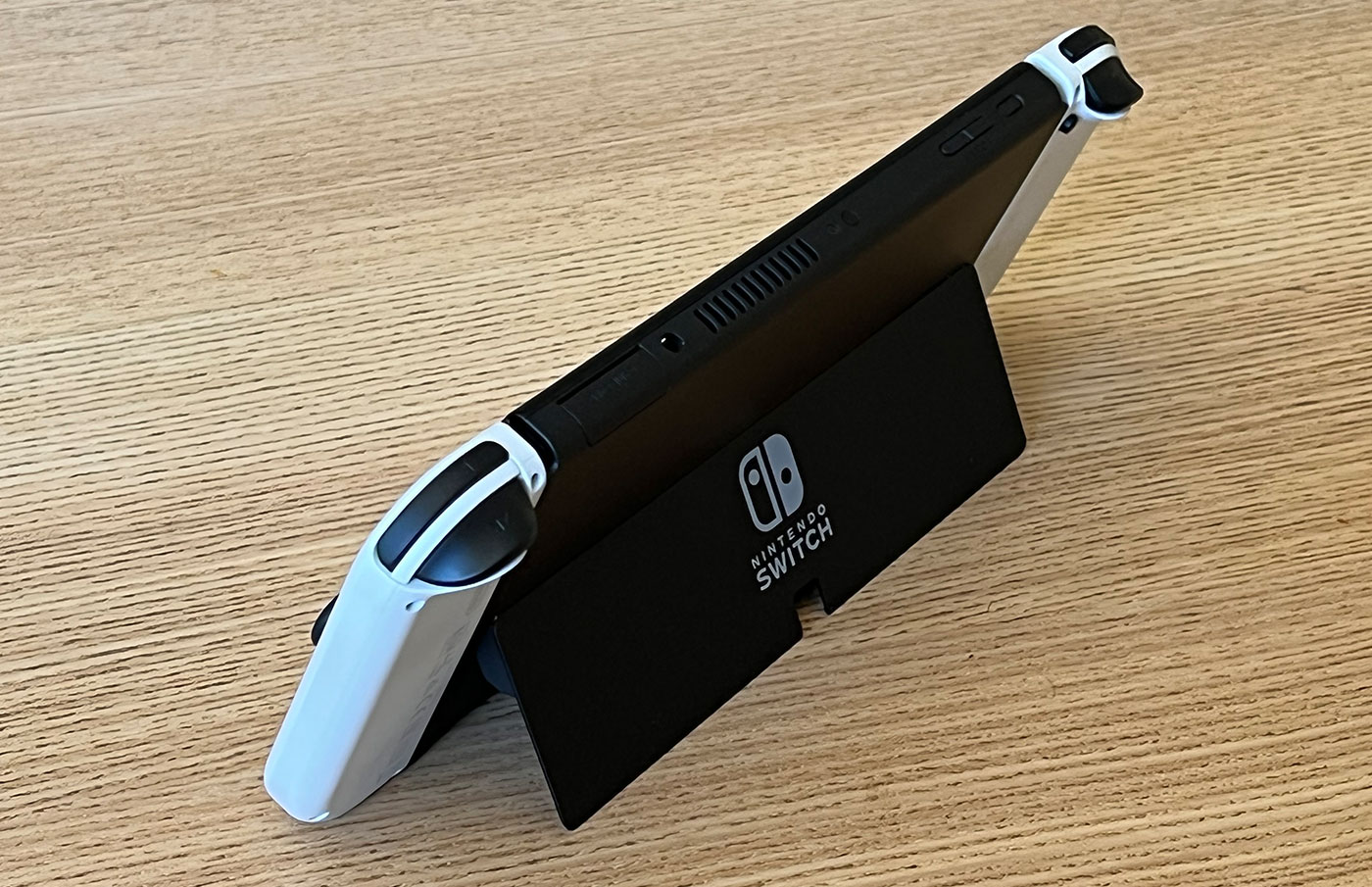
When it comes to the new Nintendo Switch dock, there’s not a lot of change here. We have the inclusion of an ethernet port which is great for increasing download speeds or ensuring you have the most stable connection whilst playing Super Smash Bros, but don’t expect any change in the way of output to your TV. In fact, you can literally use this dock with the original Switch or your old dock with the Switch OLED.
The Switch OLED has double the internal storage at 64GB, which is actually really welcomed. Nintendo has said that the Switch OLED has better acoustics resulting in better sound, but to be honest, I never had an issue with how the original sounded, and I didn’t notice too much of an improvement here.
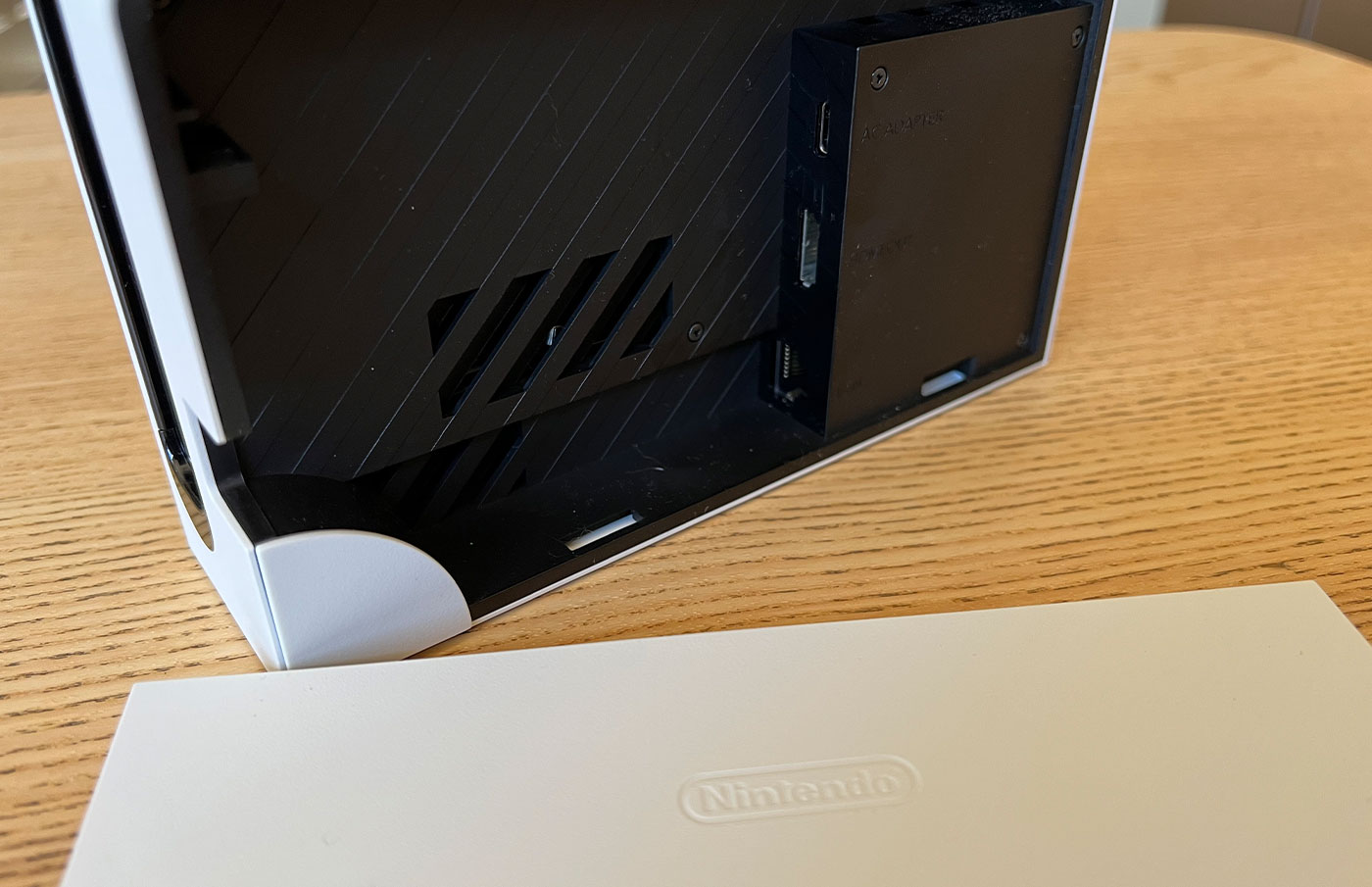
All of these things probably aren’t must-haves for those that already own a Switch (particularly the newer model with the bigger battery), but I can guarantee that once you see a Switch OLED in person or hold one in your hands, you’ll never want to go back to the original one. You’ll have yourself wondering how you ever used the original Switch for the last four years.

